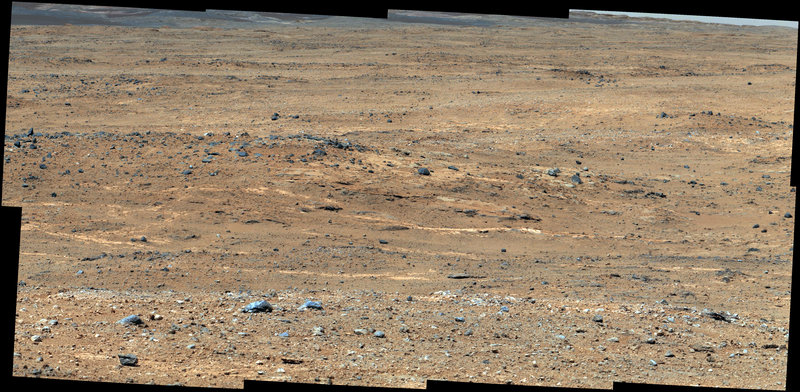LOS ANGELES – NASA’s Curiosity rover hasn’t discovered any signs of methane in the atmosphere of Mars, a finding that does not bode well for the possibility that microbes capable of producing the gas could be living below the planet’s surface, scientists said Thursday.
Since landing in Gale Crater last year, the car-size rover has gulped Mars air and scanned it with a tiny laser in search of methane. On Earth, most of the gas is a byproduct of life, spewed when animals digest or plants decay.
Curiosity lacks the tools to directly hunt for simple life, past or present. But scientists had high hopes that the rover would inhale methane after orbiting spacecraft and Earth-based telescopes detected plumes of the gas several years ago.
“If you had microbial life somewhere on Mars that was really healthy and cranking away, you might see some of the signatures of that in the atmosphere,” said mission scientist Paul Mahaffy of NASA’s Goddard Space Flight Center.
During Curiosity’s first eight months on the red planet, it sniffed the air during the day and at night as the season changed from spring to summer.
“Every time we looked, we never saw it,” said Christopher Webster of NASA’s Jet Propulsion Laboratory, who led the research published online in the journal Science.
Webster said while the result was “disappointing in many ways,” the hunt for the elusive gas continues. While methane is linked to living things, it can also be made by non-biological processes.
Mars today is a hostile place — extremely dry and constantly bombarded by radiation. Billions of years ago, the planet boasted a thicker atmosphere and possible lakes. Scientists generally agree that nothing can live on the Martian surface at present since it’s too toxic. If there are living things on Mars, scientists theorize they’re likely underground.
Just because Curiosity didn’t detect methane near its landing site doesn’t mean the gas is not present elsewhere on the planet, said Bill Nye, chief executive of the Planetary Society, a space advocacy group.
Several years ago, scientists became excited at the prospect of methane-producing microbes after Michael Mumma of NASA’s Goddard Space Flight Center noticed a mysterious belch of methane from three regions in Mars’ western hemisphere. Mumma said he stood by his observations.
Send questions/comments to the editors.



Success. Please wait for the page to reload. If the page does not reload within 5 seconds, please refresh the page.
Enter your email and password to access comments.
Hi, to comment on stories you must . This profile is in addition to your subscription and website login.
Already have a commenting profile? .
Invalid username/password.
Please check your email to confirm and complete your registration.
Only subscribers are eligible to post comments. Please subscribe or login first for digital access. Here’s why.
Use the form below to reset your password. When you've submitted your account email, we will send an email with a reset code.